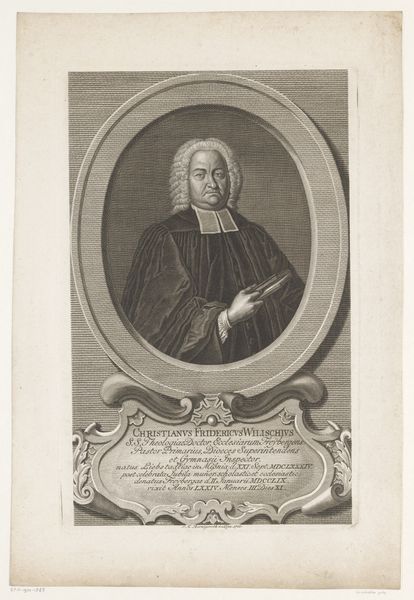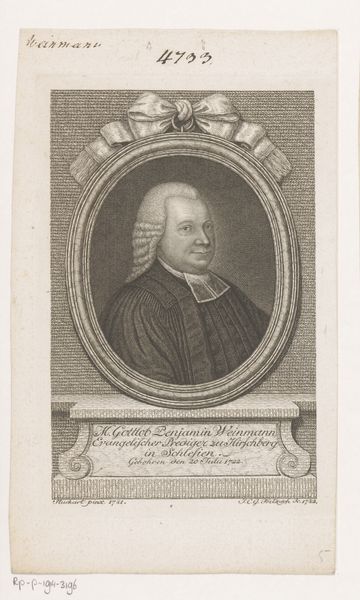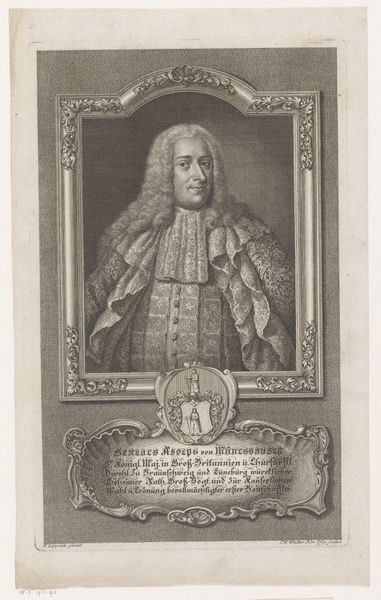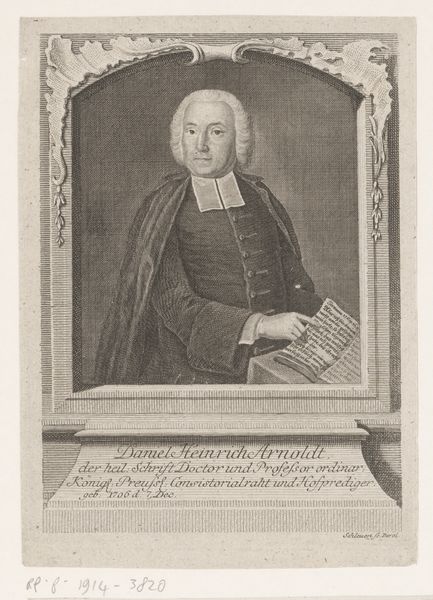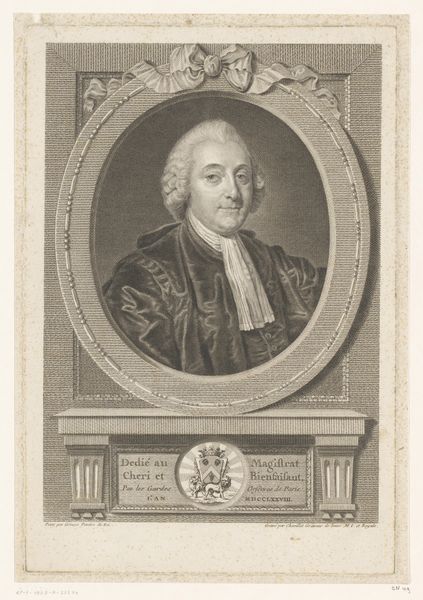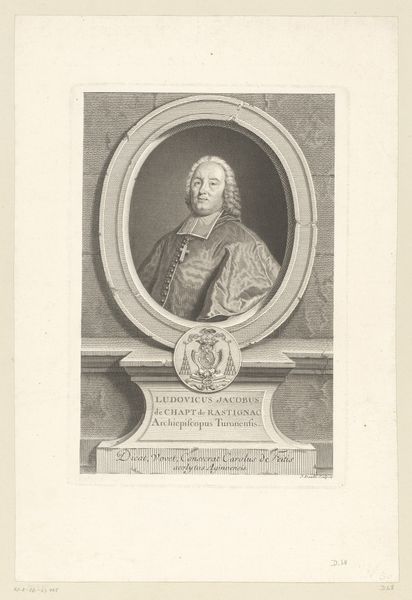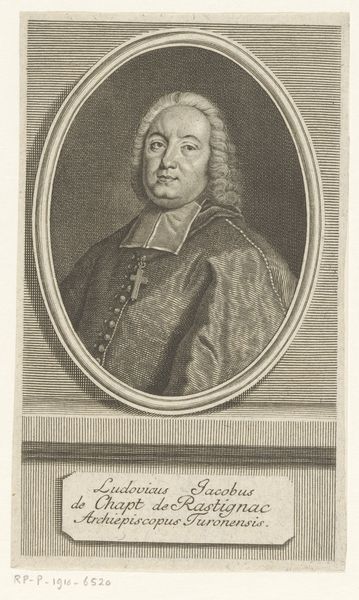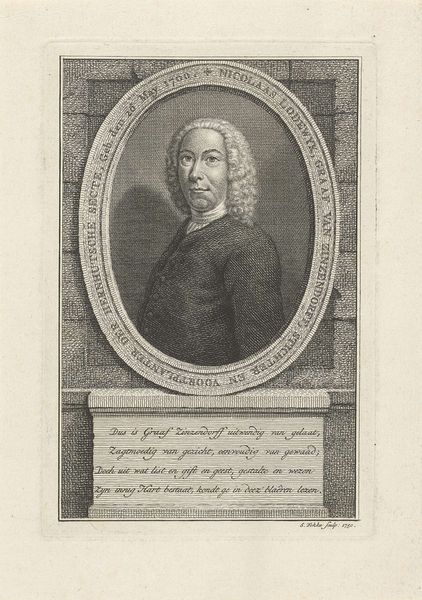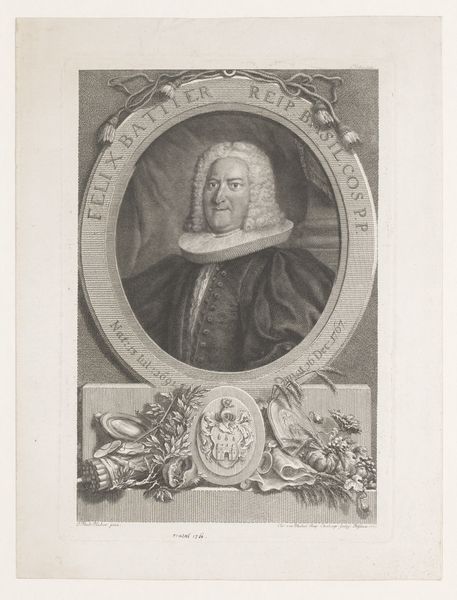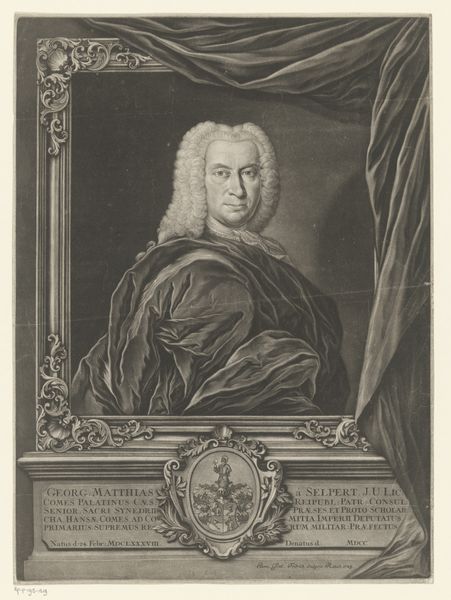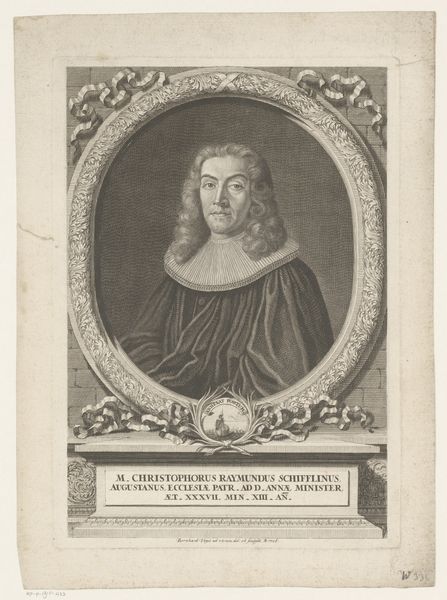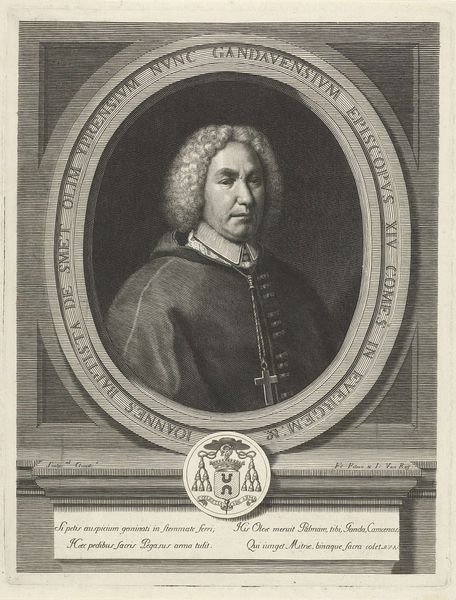
#
pencil drawn
#
light pencil work
#
pencil sketch
#
old engraving style
#
white palette
#
pencil drawing
#
old-timey
#
19th century
#
pencil work
#
tonal art
Dimensions: height 177 mm, width 101 mm
Copyright: Rijks Museum: Open Domain
Editor: This is a portrait of Simon Ambrosius von Stock, created in 1773 by Johann Ernst Mansfeld. It looks like a pencil drawing, almost like an engraving in its level of detail. I'm immediately struck by the formality and how it communicates a sense of status. What do you see in this piece, especially beyond the immediate impression of wealth and power? Curator: It's important to acknowledge that portraits, particularly those depicting figures of authority like von Stock, a bishop, served specific social and political functions. How might this image reinforce existing hierarchies of power? Editor: I suppose it's about solidifying his image, both to represent the Church and to assert his individual importance within it. It seems very much about presenting a specific image to the world. Curator: Precisely. Consider the performative aspect of representation here. Think about how someone like Simon Ambrosius would be viewed within the framework of intersectionality: how did race, class, and religious identity converge to shape his lived experience and the representation he wanted to project? Also, what might be absent or hidden from the portrait? Whose stories aren't being told? Editor: That’s an important point. I was so focused on the immediate impression. It's a reminder that representation is always selective, and potentially silencing of others. What this work says is, there were some people more important than others back then. And it clearly portrays it. Curator: And art actively participated in that world, upholding structures, and simultaneously revealing and concealing its mechanisms. This helps us examine whose stories mattered and whose didn't during that period and encourages a broader discussion of historical inequality and representation. Editor: I will remember that we can look at art as a medium to challenge power relations too. It goes both ways. Thanks! Curator: Indeed, every artifact offers such insight when examined through that lens!
Comments
No comments
Be the first to comment and join the conversation on the ultimate creative platform.
